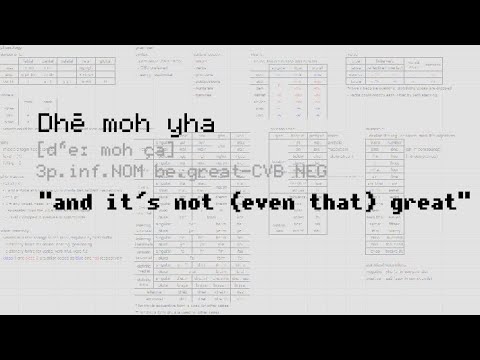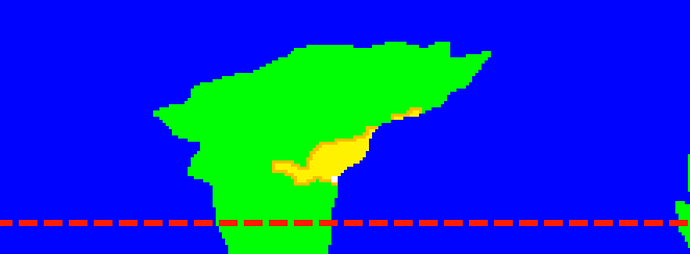hi! as the title says, I speedran making conlang! moreover, I recorded the process (the final recording had more than 3 hours of footage) and annotated some sections, which took me arguably too much time =w=
the video:
lore
I don't say anything about the lore of the video, tho you can imply some stuff from the lexicon section, like the speakers' society having a hierarchal structure from all the ranks, or having a writing system from the (for now /foreshadowing) empty spelling section, but I think I can infodump some lore here
the language is called dhōgm [dʱoːgm̩], and was the main language of the dhēgm empire pictured on the following map:
the name is derived from the name of the capital city, situated on the northern bank of a large river
there are two other big cities on the river, brēgm [breːgm̩] and mkem [m̩̊kem], the latter being the westernmost city and also the only one of the three to still exist in the modern times
the empire was very culturally influential: its bureaucracy required a writing system, which became the first writing system in the world and later evolved into different descendant systems; dhōgm calendar, though inaccurate, became the base for many calendars used in the modern times; their state religion, though separated into many subdivisions after the fall, is still somewhat influential in the modern times
but that's not all! I could go on about clothing and architecture and education and many more things influenced by this ancient empire, but I'll focus on the basics of how their society functioned
dhēgm empire was a theocracy, born from a civil war among the three cities mentioned before, which divides the old era (OE) and the new era (NE) in their calendar. in their beliefs, the world was created by a group of holy entities, mkuome [m̩̊ku͡ome], which I translated as angels. while they abandoned the world, the emperor, chosen by the most high-ranking church officials (usually the oldest son of the emperor), must still ensure their rules are followed, so that when they return and the world gets recreated the humans will be spared and allowed to live in the new world after the destruction of the old one
in reality though, this just gave a religious justification for the emperor to have nearly unlimited power, though having to appease the clergy class, among others, to ensure that their dynasty keeps controlling the throne
the society didn't only have a strong class hierarchy, as it was also strongly patriarchal, with a sex-based gender binary. despite this, some women were chosen as empresses. hairstyles and to some extent clothing weren't gendered, and overall gender expectations weren't identical to modern western societies
the empire was in a downfall for a while. or rather, the problems that led to its downfall have been piling up despite the improving life quality of the citizens and the vast expansion. over time rulers started to only care about their ambitions in following their predecessors' successes, which dissatisfied the aristocracy and clergy for different reasons. moreover, the emperors were slowly losing their allies through continuously breaking promises made by their predecessors. all of this also came at the expense of the common citizens and peasants, who also, despite this, started gaining power through increased trade
eventually, the newly aquired territories were lost to other, more influential regionally, kingdoms, as several civil wars and numerous revolts from different classes weakened the army, upon which the occupation and emperor's power relied
the empire fully ended with the destruction of the capital city around 600 NE, though other big cities still kept electing emperors for some time, while dhōgm language was still spoken in some areas up until around 1400 NE

